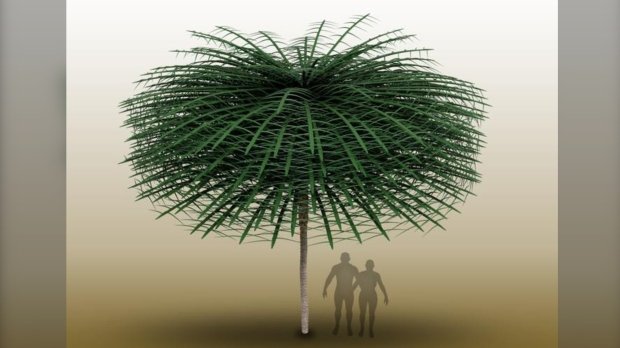Hina Alam, Canadian Press
Published Monday, February 5, 2024 at 10:30 PM ET
Last updated on Monday, February 5, 2024 at 10:31 PM EST
Mysterious fossils discovered in a New Brunswick quarry seven years ago reveal an extinct tree with a slender trunk and pompom-like tip. This is a remnant from the time when dinosaurs walked the earth.
A paper published last week in the journal Current Biology opens a window into the world of plants during the Carboniferous Period, when New Brunswick was a tropical region within 10 degrees of the equator.
Matt Stimson, one of the study authors at the New Brunswick Museum in Saint John, said the plants date from a period of flux when plants and animals began to adapt and diversify on land.
He said the tree was a “failed experiment in evolution” and did not survive, but could help researchers understand the complexity of forests. And finding an intact fossilized tree is rare, he added.
“It’s very rare. And it’s very rare, but it’s only found in a tiny fraction of the entire fossil record so far,” he said. “It is the place where trunks, branches, and leaves attach and complete, not just at this time, but throughout geological time.”
The fossil was discovered in 2017 at a quarry in Norton, No. 4, about 50 miles southeast of Fredericton. Before publishing, the researchers needed to verify their findings to make sure the science was accurate and that they had, in fact, discovered something brand new, he said.
“Science takes time, after all. Big claims require big evidence.”
While doing summer fieldwork with Olivia King, a graduate student at St. Mary’s University, Stimson said they came across a large stone that appeared to be discolored and began quietly excavating the area around it. Told. The fossil, which is more than 300 million years old and has been preserved in two tons of rock, has begun to appear as a spiral of leaves attached to its trunk.
The area where the fossils were discovered is thought to have been a lakebed on a fault line when trees were growing. Stimson said the earthquake caused the tree to fall and become buried under a layer of sand.
Co-author Adrian Park of the New Brunswick Department of Natural Resources said another unique thing about the fossil is that it is preserved in a 3D-like manner.
“Typically, a tree falls and buries itself in mud. That mud is compressed into rock, and in the process the fossils are just pressed into a single layer on a flat surface,” he said.
“On the other hand, in this case, the branches are actually penetrating the strata. And the strata themselves are very distorted. … The sand is poured in from above very quickly, preserving it in three dimensions. did.”
He said the tree, named Sanphodiacaulis densifolia after the quarry where it was discovered, has a 16-centimeter, soft trunk, is 3 meters tall and has 250 leaves measuring about 1.75 meters long. It is said that he had a crown that looked like a bottle brush.
Stimson called it a “giant plant” rather than a tree.
“They were like giant ferns or very weird Dr. Seuss-like trees, very different from what we see today,” he says, referring to illustrations by the popular children’s book author. said.
“The branches and leaves come directly from the stem and come out horizontally from the tree in a spiral pattern…very densely packed.”
Stimson said this structure allowed the trees to capture as much sunlight as possible after they moved through the upper and middle canopies of the forest to ground level, where these small, shrub-like plants live. He said it would be.
The plants tell a story of what the forest was like at that time, he said. There aren’t many plant fossils on Earth from this era, known as Romer’s Gap. He added that while this plant was a failed experiment, the plants that survived are the ancestors of today’s forests, but in very different shapes. For example, moss was up to 30 meters tall in the early Carboniferous period, but is now only a few centimeters tall, he said.
He said the Carboniferous period, when these trees were discovered, was also a transitional period when marshes were teeming with life, including spore-bearing ferns, millipedes and giant salamander-like creatures that began to crawl out of the water. .
“These early forests were habitats and homes for the first amphibians to transition from water to land. You don’t want to go swimming in the water,” Stimson said. “There were huge sea scorpions, very large fish with teeth…millipedes and other types of insects were starting to crawl on the land.”

